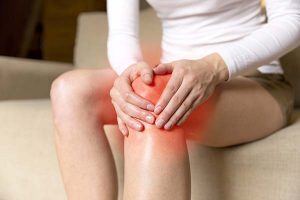Maintaining Vascular Health as We Age
Author: Michael (Mike) Shaw PA-C, ABAAHP
There’s a quote that says you are only as old as your arteries and I say there is a lot of truth to that.
The arteries are the main conduit for the delivery of oxygen, getting rid of carbon dioxide, and supplying all nutrients throughout the body. The health of the vascular system ends up having a fairly profound effect on all organ systems, because pressure changes and changes in pulsatile waveforms can damage tissues of different organ systems, especially the brain, kidneys, and heart.
As the arteries age, they become stiffer. When the heart beats, but the arteries can’t expand, it shoots up the systolic blood pressure and puts pressure on your brain, your kidneys, and your heart. Those are obviously organs that are really important to us, and they tend to give us problems as we get older.
Rather than focus on all the things that can go wrong, I’d like to talk about things that you can do to help monitor and potentially slow the rate of aging of your vascular system.
Measuring Vascular Health
A while back, I met a physician that developed a system called PhysioAge that was a way to evaluate and analyze the rate of aging in an individual person. One of the six major biomarkers of this system measured vascular age or what they call cardio age. It was measured using sophisticated equipment that can evaluate the pulsatile pressure changes when the left ventricle contracts and squeezes a volume of blood out through the aorta and downstream.
Ideally, people get a baseline measurement in their 20’s or 30’s and continue to measure throughout their later years. However, we aren’t all that proactive. No matter your chronological age, taking a measurement now to determine your cardio age is helpful. It still provides you a data point to see how well you do as chronological time moves forward. And of course, the whole game is trying to keep the physiologic rate of artery aging behind the chronological advancement of time.
It also alerts you to changes that may be occurring too quickly and if an intervention is necessary to help slow down the rate of deterioration. The effectiveness of the intervention can be determined by subsequent measurements.
The Importance of Nitric Oxide
In youth, our bodies innately possess sufficient quantities of a very potent vasodilator called nitric oxide. Nitric oxide is responsible for the relaxation and dilation of vessels, low flow pressure, increased perfusion, distribution of nutrients, and elimination of waste products. As we age, nitric oxide, like a lot of other things inside the body, declines. When you see an increase in blood pressure, it’s important to look at what’s going on with nitric oxide as well.
Many people may not know this, but beets are an excellent source of nitrate that gets converted to nitric oxide. If you are not a fan of eating beets, beet-derived supplements such as Neo 40 are also available.
 Managing Inflammation
Managing Inflammation
When we talk about change in vascular structure and elasticity, we don’t want to forget about the interplay with the inflammatory response inside the body and the effect it has on the whole vascular system. Inflammation affects all organ systems, but when you start to generate inflammation in the vascular system it exacerbates the degrading process of the protective linings which reduces elasticity and promotes rigidity.
I’m a big proponent of looking at natural ways to try to help lower inflammatory responses and one of the easiest, unless you’re allergic to fish, is omega-3 fatty acids. Incorporating anti-inflammatory foods and spices like berries, broccoli, avocado, and turmeric can also help.
Exercise for a Healthy Vascular System
Movement is crucial as we age, and I don’t just mean movement of our muscles, bones, and joints. We want to maintain the movement of blood through our vessels to keep them healthy and flexible.
Excercise, such as interval training, is a great way to get your heart beating and your blood moving. This involves picking up the pace, whether it be during a walk, run, or training session, for a set amount of time and then slowing back down for a short duration. Interval training has been shown in some studies to lower blood pressure in overweight and obese individuals.
 Measure, Move, and Manage
Measure, Move, and Manage
Maintaining vascular health as you age doesn’t have to be complicated. Measure your nutrient levels, cardio age, and nitric oxide. Move your body regularly in a way that challenges your cardiovascular system, and manage inflammation to slow the degradation process. These simple steps can help keep your vascular system young and fit no matter your chronological age.
Mike Shaw, PA-C specializes in natural anti-aging therapies. To learn more about the PhysioAge program or to book an appointment with Mike, call 316-682-3100 for more information.





